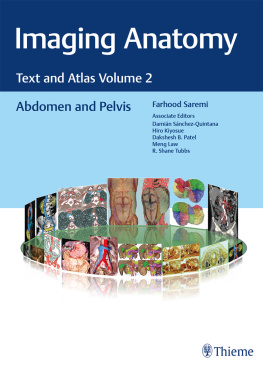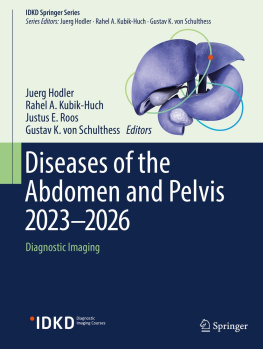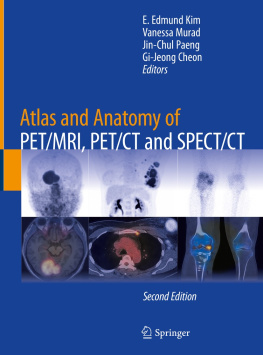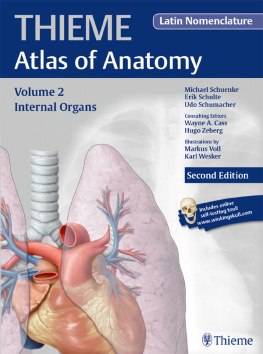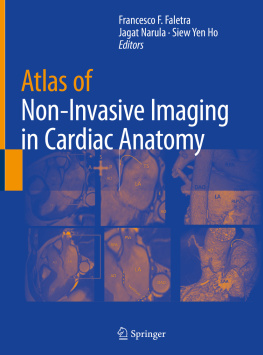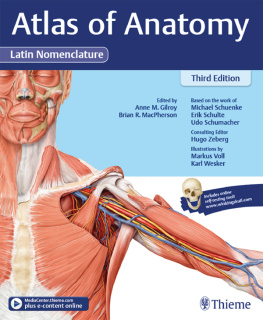Farhood Saremi - Imaging Anatomy: Text and Atlas Volume 2: Abdomen and Pelvis
Here you can read online Farhood Saremi - Imaging Anatomy: Text and Atlas Volume 2: Abdomen and Pelvis full text of the book (entire story) in english for free. Download pdf and epub, get meaning, cover and reviews about this ebook. year: 2022, publisher: Thieme Medical Publishers, genre: Romance novel. Description of the work, (preface) as well as reviews are available. Best literature library LitArk.com created for fans of good reading and offers a wide selection of genres:
Romance novel
Science fiction
Adventure
Detective
Science
History
Home and family
Prose
Art
Politics
Computer
Non-fiction
Religion
Business
Children
Humor
Choose a favorite category and find really read worthwhile books. Enjoy immersion in the world of imagination, feel the emotions of the characters or learn something new for yourself, make an fascinating discovery.
- Book:Imaging Anatomy: Text and Atlas Volume 2: Abdomen and Pelvis
- Author:
- Publisher:Thieme Medical Publishers
- Genre:
- Year:2022
- Rating:3 / 5
- Favourites:Add to favourites
- Your mark:
Imaging Anatomy: Text and Atlas Volume 2: Abdomen and Pelvis: summary, description and annotation
We offer to read an annotation, description, summary or preface (depends on what the author of the book "Imaging Anatomy: Text and Atlas Volume 2: Abdomen and Pelvis" wrote himself). If you haven't found the necessary information about the book — write in the comments, we will try to find it.
Unique anatomic atlas provides an indispensable virtual desk dissection experience
Normal imaging anatomy and variants, including diagnostic and surgical anatomy, are the cornerstones of radiologic knowledge. Imaging Anatomy: Text and Atlas Volume 2, Abdomen and Pelvis is the second in a series of four richly illustrated radiologic references edited by distinguished radiologist Farhood Saremi. The atlas is coedited by esteemed colleagues Damin Snchez-Quintana, Hiro Kiyosue, Dakshesh B. Patel, Meng Law, and R. Shane Tubbs with contributions from an impressive cadre of international authors. Succinctly written text and superb images provide readers with a virtual, user-friendly dissection experience.
This exquisitely crafted atlas combines fundamental core anatomy principles with modern imaging and postprocessing methods to increase understanding of intricate anatomical features. Twenty-two concise chapters cover the abdominal wall, alimentary tract, liver, biliary system, pancreas, spleen, peritoneum, genitourinary system, pelvic floor, neurovasculature, and surface anatomy. Relevant anatomical components of the abdomen and pelvis are discussed, including musculature, arteries, veins, lymphatics, ducts, and innervation.
Key Highlights
- High-quality cross-sectional multiplanar and volumetric color-coded CT, MRI, and angiography imaging techniques provide detailed insights on specific anatomy
- Cross-sectional and topographic cadaveric views by internationally known anatomists coupled with more than 1,600 illustrations clearly elucidate difficult anatomical concepts
- Consistently formatted chapters include an introduction, embryology, review of anatomy, discussion of anatomical variants, postsurgical anatomy, and congenital and acquired pathologies
This unique resource provides an excellent desk reference for differentiating normal versus pathologic anatomy. It is essential reading for medical students, radiology residents and veteran radiologists, internists, and general surgeons, as well as vascular and transplant surgeons.
This print book includes complimentary access to a digital copy on https://medone.thieme.com.
Publishers Note: Products purchased from Third Party sellers are not guaranteed by the publisher for quality, authenticity, or access to any online entitlements included with the product.
Farhood Saremi: author's other books
Who wrote Imaging Anatomy: Text and Atlas Volume 2: Abdomen and Pelvis? Find out the surname, the name of the author of the book and a list of all author's works by series.

